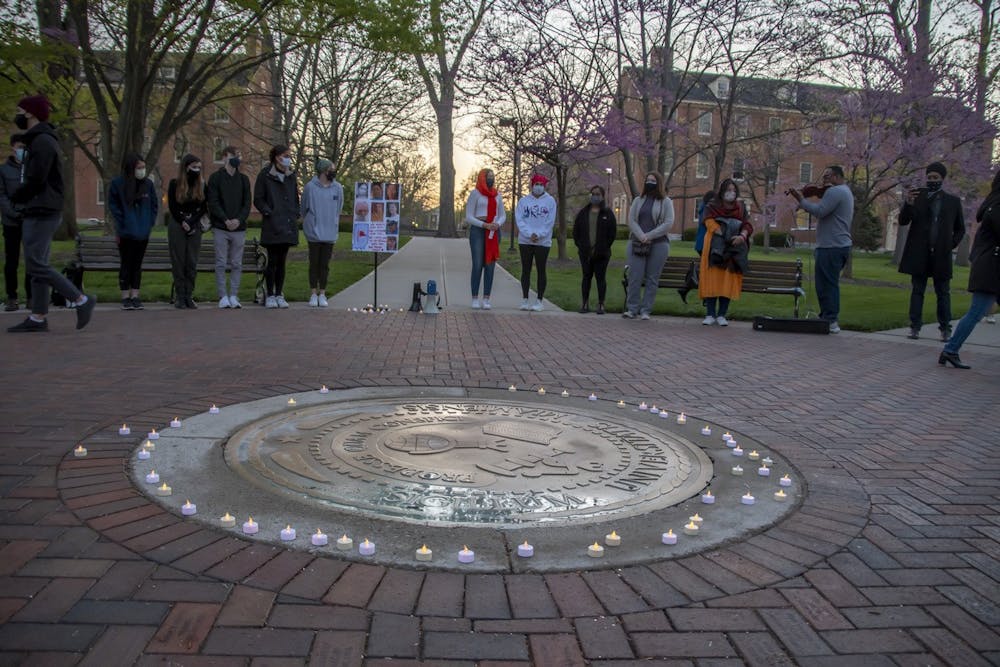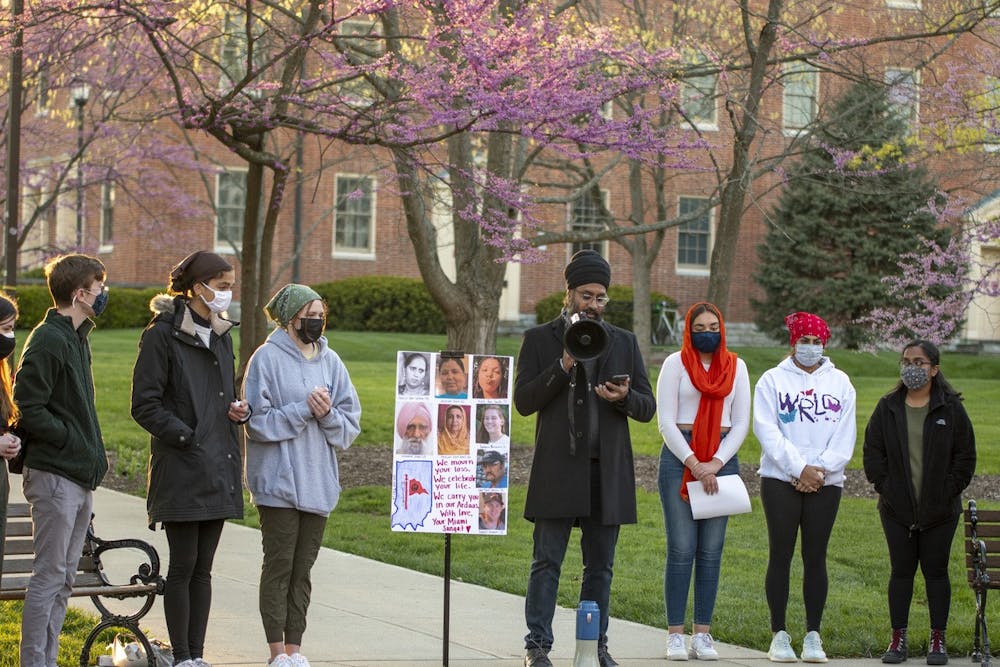Students, staff and community members gathered at The Seal on Thursday, April 22, to grieve and honor the lives lost in the Indianapolis FedEx shooting. Four of the eight victims were of Sikh descent.
The vigil occurred two weeks after the student-organized vigil for victims of the Atlanta spa shootings.
While all victims of the Indianapolis shooting were commemorated and respected, the vigil also drew attention to the centuries-long struggles of the Sikh (pronounced sic) community in the United States and across the globe. Topics ranging from the tendency of people to incorrectly pronounce the group’s name as ‘seek’ to the horrors of a 2012 shooting at a Sikh temple in Wisconsin were discussed.
The identity of the victims were read to emphasize the alleged motivation of the crime. Many have interpreted the shooting as a hate crime against the Sikh community.
Navkiran Chima, a sophomore international studies and political science double major and founding president of the Sikh Student Association, organized the vigil.
Chima said the vigil was meant to commemorate the lives of the victims while highlighting the history of discrimination against the Sikh community.
“The vigil was there to draw attention to the issue of gun violence, commemorate and honor the lives of the victims in the shooting and to raise awareness about who we are as a people,” Chima said. “The vigil was meant to honor the lives lost, especially since Sikh students haven’t been heard at Miami since there aren’t a lot of us.”
The vigil had several scheduled and unscheduled speakers and featured a Sikh prayer by Cincinnati architect Jaipal Singh and a speech by professor of English and Asian/Asian American studies Anita Mannur read by graduate student Simran Kaur.
About 70 people attended the event.

Students stand at the seal in solidarity with the Sikh community in the wake of the Indianapolis shooting.
Anondo Banerjee, Miami’s sexual and interpersonal violence prevention education and outreach coordinator, attended the vigil and helped pass out candles. He believes both the scheduled and non-scheduled speakers brought important issues to light at the event.
“It’s a bit weird to use the word ‘fantastic,’ but I thought the scheduled speakers held a really good balance between mourning for the community, uplifting the community, and also calling out some of the difficult truths of why this violence happened,” Banerjee said. “I would say that the non-scheduled speakers seemed to focus a bit more on next steps to solve these problems, which also makes sense.”
Enjoy what you're reading?
Signup for our newsletter
The non-scheduled speeches included accounts of racial profiling by Miami police, laments of the white supremacist culture on campus and calls to stop the hate against the Sikh community and other marginalized groups.
“The scheduled speakers did a good job on giving space to drive but also calling out the larger issue, and the non-scheduled speakers had powerful stories to share as well,” Banerjee said.
Evan Gates, a first-year quantitative economics and individualized studies double major, also attended the event. He went to the vigil just hours after participating in a protest on campus against racism and police brutality and talked about the differences between the two events.
“The energies at the two events were very different,” Gates said. “At the protest, people were angrier — we were talking about death in a way that was invigorating and emotional. The vigil was more somber; it was the same issue of people being killed over race or religion but examined in a different way.”
However, Gates explained that these distinctions didn’t detract from either event.
“I don’t think either approach was bad — it was good to experience both,” Gates said. “There were definitely some angry moments at the vigil and sorrowful moments at the protest. One was to move to action, and the other was to commemorate the dead and understand what happened.”
Like the vigil for the Atlanta spa shootings, the Indianapolis vigil ended with participants placing candles around the seal to honor the victims. While by no means healed from the Indianapolis tragedy, Chima did feel better after seeing so many diverse groups at the vigil.
“The amount of people that were there, the diversity of people that were there – Asian, Asian American students, Black students, students on the left-leaning progressive spectrum, the Latinx community, Jewish students, the Middle Eastern community, they were there,” Chima said. “I was so heartwarmed and so grateful to have that kind of support.”
While there was widespread support for the Sikh Community at the vigil, Chima cautioned that there was more work to be done.
“We really do need to create a culture of understanding and of respecting people who are different from us, and in order to do that we need to be a saint and a soldier to do charity and do good work but confront injustice when we see it,” she said. “This is a consequence of something that hasn’t changed, and we need to be that change.”




